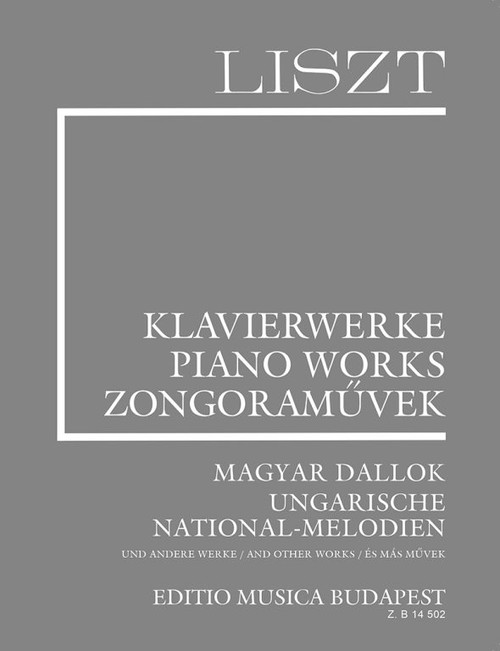Product Overview
Liszt Ferenc: Free Arrangements and Technical Exercises (Suppl.16) / Kaczmarczyk Adrienne, Sas Ágnes / Editio Musica Budapest Zeneműkiadó / 2021
Liszt Ferenc: Szabad feldolgozások és technikai gyakorlatok (Suppl.16) Összkiadás
Paperback
Made in Hungary
Kiadó: Editio Musica Budapest Zeneműkiadó
Kötés típusa: kartonált
Méret: 23 cm x 30 cm
ISBN: 9790080305362 / 979-0080305362

Az Új Liszt-Összkiadás 16. pótkötete szabad feldolgozásokat és technikai gyakorlatokat tartalmaz. A főrészben három feldolgozás korai változatai kaptak helyet. Az első egy Schlegel-versre komponált Schubert-dal, a Die Rose átiratának első változata és köztes változata. Berlioz Harold-szimfóniája 2. tételének átdolgozása szintén irodalmi inspirációs forrásból táplálkozik: Lord Byron (1788-1824) elbeszélő költeménye, a Childe Harold zarándokútja Lisztnek és Berlioznak közös olvasmányélménye volt. Az alvajáró című Bellini-opera témáira írt fantázia (melynek kötetünk az 1842-ből származó első és a következő évtized folyamán elkészült második változatát közli) zenetörténeti jelentőséggel bír, ugyanis az ezen (és más operafantáziákon) végzett munka során bontakozott ki Liszt előtt egy új fantáziakoncepció, amely a korábbiaknál összetettebb és koncentráltabb fantáziákban öltött testet.
A kötet függeléke különleges anyagokat közöl. A spanyol témákra írt feldolgozások töredékesen fennmaradt fogalmazványain kívül most először jelenik meg nyomtatásban három olyan forrás, amely rávilágít Liszt zongoratanításának technikai aspektusaira. Három gyakorlatsorozatról van szó: az elsőt Liszt saját kezűleg írta Valérie Boissier-nak 1832-ben; a második egy ugyanebből az időszakból vagy kicsit későbbről való, azonosítatlan kéztől származó másolat; végül a harmadikat Henri Maréchal 1871-ben jegyezte le Rómában a zeneszerző diktálása nyomán.
A kötet részletes, új kutatási eredményeket tartalmazó magyar, angol és német nyelvű előszót, öt kézirat-fakszimilét és angol nyelvű kritikai jegyzetapparátust is magában foglal. A vászonkötésű kötettel egyidejűleg megjelenik annak kartonborítású, praktikus változata is, amelynek tartalma - a kritikai jegyzeteket leszámítva - azonos a vásznas kötetével.







